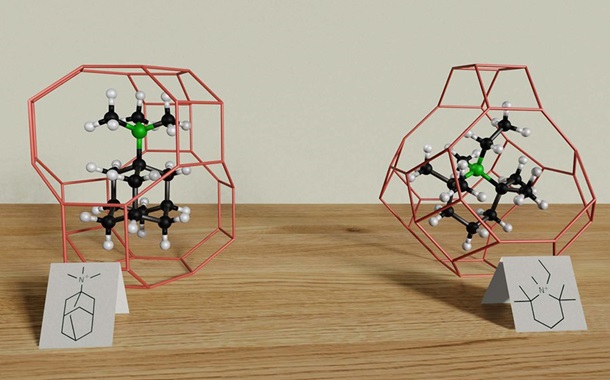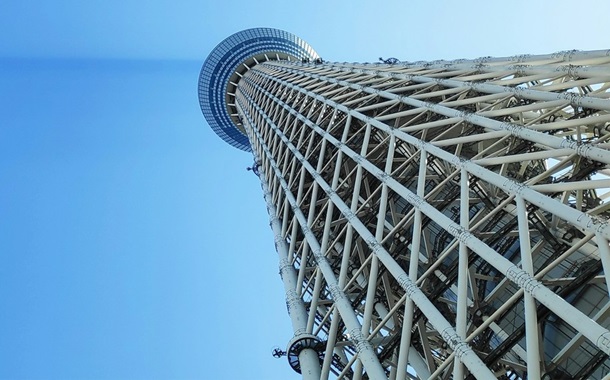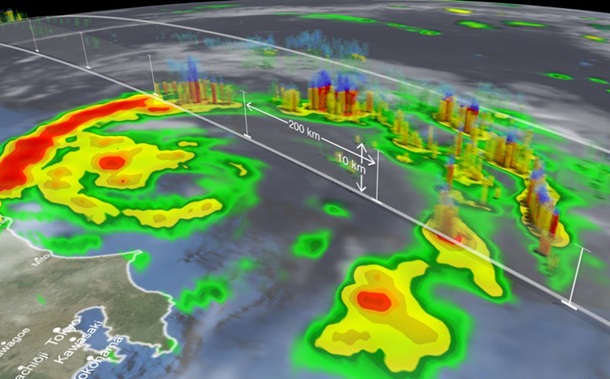Elbow-Hand Robotic Exoskeletons for Active and Passive Rehabilitation on Post-Stroke Patients: A Bioengineering Review
Downloads
Doi:10.28991/HIJ-2024-05-04-020
Full Text:PDF
Downloads
Kuriakose, D., & Xiao, Z. (2020). Pathophysiology and treatment of stroke: present status and future perspectives. International Journal of Molecular Sciences, 21(20), 7609. doi:10.3390/ijms21207609.
Phillips Morales, í“. (2019). Update on Guillain-Barré Syndrome. Sinergia Medical Journal, 4(11), e290. doi:10.31434/rms.v4i11.290.
Mendis, S. (2013). Stroke disability and rehabilitation of stroke: World Health Organization perspective. International Journal of Stroke, 8(1), 3–4. doi:10.1111/j.1747-4949.2012.00969.x.
Bacalangco, J. E. I., Bawagan, K. G. F., Bernardo, C. C., Medina, R. L. S., Reyes, J. M. L., & Tolentino, R. E. (2021). Design and Control of Robotic Elbow Using Shape Memory Alloy as Actuators. 6th International Conference on Communication and Electronics Systems (ICCES), 13-20. doi:10.1109/ICCES51350.2021.9489192.
Bardi, E., Gandolla, M., Braghin, F., Resta, F., Pedrocchi, A. L. G., & Ambrosini, E. (2022). Upper limb soft robotic wearable devices: a systematic review. Journal of NeuroEngineering and Rehabilitation, 19(1), 87. doi:10.1186/s12984-022-01065-9.
Aguirre, J., Perez, M. B., Palomares, R., & Cornejo, J. (2022). Ergonomic Bio-Design and Motion Simulation of a Mechatronic Orthosis System for Knee Rehabilitation. Proceedings of the 2022 IEEE 29th International Conference on Electronics, Electrical Engineering and Computing, INTERCON 2022. doi:10.1109/INTERCON55795.2022.9870040.
Rodriguez, V., Sanchez, L., Palomares, R., & Cornejo, J. (2022). Ergonomic Bio-Design and Motion Simulation of a Mechatronic Orthosis System for Elbow Rehabilitation. Proceedings of the 2022 IEEE 29th International Conference on Electronics, Electrical Engineering and Computing, INTERCON 2022. doi:10.1109/INTERCON55795.2022.9870083.
Vargas, M., Cornejo, J., & Correa-López, L. E. (2016). Biomedical Engineering: The Technological Revolution for the Future of the Peruvian Health System. Revista de La Facultad de Medicina Humana, 16(3), 95-96. doi:10.25176/rfmh.v16.n3.659.
Cornejo, J., Cornejo-Aguilar, J. A., Gonzalez, C., & Sebastian, R. (2021). Mechanical and Kinematic Design of Surgical Mini Robotic Manipulator used into SP-LAP Multi-DOF Platform for Training and Simulation. Proceedings of the 2021 IEEE 28th International Conference on Electronics, Electrical Engineering and Computing. doi:10.1109/INTERCON52678.2021.9532965.
Cornejo, J., Cornejo-Aguilar, J. A., & Palomares, R. (2019). Biomedik Surgeon: Surgical Robotic System for Training and Simulation by Medical Students in Peru. Proceedings of the 2019 International Conference on Control of Dynamical and Aerospace Systems, XPOTRON 2019. doi:10.1109/XPOTRON.2019.8705717.
Cornejo, J., Cornejo-Aguilar, J. A., Sebastian, R., Perales, P., Gonzalez, C., Vargas, M., & Elli, E. F. (2021). Mechanical Design of a Novel Surgical Laparoscopic Simulator for Telemedicine Assistance and Physician Training during Aerospace Applications. 3rd IEEE Eurasia Conference on Biomedical Engineering, Healthcare and Sustainability, ECBIOS 2021, 53–56. doi:10.1109/ECBIOS51820.2021.9510753.
Cornejo, J., Cornejo-Aguilar, J. A., Vargas, M., Helguero, C. G., Milanezi De Andrade, R., Torres-Montoya, S., Asensio-Salazar, J., Rivero Calle, A., Martínez Santos, J., Damon, A., Quiñones-Hinojosa, A., Quintero-Consuegra, M. D., Umaña, J. P., Gallo-Bernal, S., Briceño, M., Tripodi, P., Sebastian, R., Perales-Villarroel, P., De La Cruz-Ku, G., ... Russomano, T. (2022). Anatomical Engineering and 3D Printing for Surgery and Medical Devices: International Review and Future Exponential Innovations. BioMed Research International, 6797745. doi:10.1155/2022/6797745.
Cornejo, J., Perales-Villarroel, J. P., Sebastian, R., & Cornejo-Aguilar, J. A. (2020). Conceptual design of space biosurgeon for robotic surgery and aerospace medicine. IEEE Andescon, Quito, Ecuador. doi:10.1109/ANDESCON50619.2020.9272122.
Cornejo, J., Cornejo, J., Vargas, M., Carvajal, M., Perales, P., Rodríguez, G., Macias, C., Canizares, S., Silva, P., Cubas, R. F., Jimenez, M. C., Lincango, E. P., Serrano, L., Palomares, R., Aspilcueta, S., Castillo-Larios, R., Evans, L. A., De La Cruz-Vargas, J. A., Risk, M., ... Elli, E. F. (2024). SY-MIS Project: Biomedical Design of Endo-Robotic and Laparoscopic Training System for Surgery on the Earth and Space. Emerging Science Journal, 8(2), 372–393. doi:10.28991/ESJ-2024-08-02-01.
Quezada, J. P., Cabrera, K. S., Cornejo, J., Palomares, R., Cornejo-Aguilar, J. A., & Vargas, M. (2023). Mechatronic Conceptual Design and Kinematic Analysis of Serial-Type Robotic Exoskeleton for Assisted Rehabilitation Therapy on Upper Limbs. 2023 3rd International Conference on Advances in Electrical, Computing, Communication and Sustainable Technologies, ICAECT 2023. doi:10.1109/ICAECT57570.2023.10118243.
Xiong, F., Liao, X., Xiao, J., Bai, X., Huang, J., Zhang, B., Li, F., & Li, P. (2022). Emerging Limb Rehabilitation Therapy after Post-stroke Motor Recovery. Frontiers in Aging Neuroscience, 14, 863379. doi:10.3389/fnagi.2022.863379.
Herrnstadt, G., Alavi, N., Randhawa, B. K., Boyd, L. A., & Menon, C. (2015). Bimanual elbow robotic orthoses: Preliminary investigations on an impairment force-feedback rehabilitation method. Frontiers in Human Neuroscience, 9(March), 169. doi:10.3389/fnhum.2015.00169.
Frolov, A. A., Kozlovskaya, I. B., Biryukova, E. V., & Bobrov, P. D. (2018). Use of Robotic Devices in Post-Stroke Rehabilitation. Neuroscience and Behavioral Physiology, 48(9), 1053–1066. doi:10.1007/s11055-018-0668-3.
Nizamis, K., Stienen, A. H. A., Kamper, D. G., Keller, T., Plettenburg, D. H., Rouse, E. J., Farina, D., Koopman, B. F. J. M., & Sartori, M. (2019). Transferrable Expertise from Bionic Arms to Robotic Exoskeletons: Perspectives for Stroke and Duchenne Muscular Dystrophy. IEEE Transactions on Medical Robotics and Bionics, 1(2), 88–96. doi:10.1109/tmrb.2019.2912453.
Pan, J., Astarita, D., Baldoni, A., Dell'agnello, F., Crea, S., Vitiello, N., & Trigili, E. (2023). A Self-Aligning Upper-Limb Exoskeleton Preserving Natural Shoulder Movements: Kinematic Compatibility Analysis. IEEE Transactions on Neural Systems and Rehabilitation Engineering, 31, 4954–4964. doi:10.1109/TNSRE.2023.3341219.
Daunoraviciene, K., Adomaviciene, A., Grigonyte, A., Griškevicius, J., & Juocevicius, A. (2018). Effects of robot-assisted training on upper limb functional recovery during the rehabilitation of poststroke patients. Technology and Health Care, 26(S2), S533–S542. doi:10.3233/THC-182500.
Chang, S. R., Hofland, N., Chen, Z., Tatsuoka, C., Richards, L. G., Bruestle, M., Kovelman, H., & Naft, J. (2023). Myoelectric Arm Orthosis Assists Functional Activities: A 3-Month Home Use Outcome Report. Archives of Rehabilitation Research and Clinical Translation, 5(3), 100279. doi:10.1016/j.arrct.2023.100279.
Pignolo, L., Lucca, L. F., Basta, G., Sena, S., Pugliese, M. E., Sannita, W. G., & Dolce, G. (2016). A new treatment in the rehabilitation of the paretic upper limb after stroke: The ARAMIS prototype and treatment protocol. Annali Dell'Istituto Superiore Di Sanita, 52(2), 301–308. doi:10.4415/ANN_16_02_25.
Falkowski, P., & Jeznach, K. (2024). Simulation of a control method for active kinesiotherapy with an upper extremity rehabilitation exoskeleton without force sensor. Journal of NeuroEngineering and Rehabilitation, 21(1), 22. doi:10.1186/s12984-024-01316-x.
Baur, K., Rohrbach, N., Hermsdörfer, J., Riener, R., & Klamroth-Marganska, V. (2019). The "beam-Me-In Strategy” - Remote haptic therapist-patient interaction with two exoskeletons for stroke therapy. Journal of NeuroEngineering and Rehabilitation, 16(1), 1–15. doi:10.1186/s12984-019-0547-3.
Copaci, D., Martin, F., Moreno, L., & Blanco, D. (2019). SMA Based Elbow Exoskeleton for Rehabilitation Therapy and Patient Evaluation. IEEE Access, 7, 31473–31484. doi:10.1109/ACCESS.2019.2902939.
Cornejo, J., Cornejo Aguilar, J. A., & Perales Villarroel, J. P. (2019). International Innovations in Medical Robotics to Improve Patient Management in Peru. Journal of the Faculty of Human Medicine, 19(4), 105–113. doi:10.25176/rfmh.v19i4.2349.
Gopura, R. A. R. C., Bandara, D. S. V., Kiguchi, K., & Mann, G. K. I. (2016). Developments in hardware systems of active upper-limb exoskeleton robots: A review. Robotics and Autonomous Systems, 75, 203–220. doi:10.1016/j.robot.2015.10.001.
Chen, Z. H., Yang, Y. L., Lin, K. W., Sun, P. C., & Chen, C. S. (2022). Functional Assessment of 3D-Printed Multifunction Assistive Hand Device for Chronic Stroke Patients. IEEE Transactions on Neural Systems and Rehabilitation Engineering, 30, 1261–1266. doi:10.1109/TNSRE.2022.3173034.
Cornejo, J., Vargas, M., & Cornejo, J. (2020). Innovative Applications of Robotics and Biomedicine in Public Health during the Covid-19 Pandemic. Journal of the Faculty of Human Medicine, 20(4), 756–757.
Zavala Molina, D. A., Silva Cabrejos, R. J., Murillo Manrique, M. F., Rodríguez Bustinza, R. R., Cornejo Aguilar, J. L., & Palomares Orihuela, R. J. (2023). Geometric Modeling and Kinematic Simulation of Hand Prostheses for Adult Patients with Transradial Amputation. Engineering Profiles, 20(20), 179–200. doi:10.31381/perfilesingenieria.v20i20.6020.
Vergaray, R. A., Del Aguila, R. F., Avellaneda, G. A., Palomares, R., Cornejo, J., & Cornejo-Aguilar, J. A. (2021). Mechatronic System Design and Development of iROD: EMG Controlled Bionic Prosthesis for Middle-Third Forearm Amputee. ETCM 2021 - 5th Ecuador Technical Chapters Meeting, Cuenca, Ecuador. doi:10.1109/ETCM53643.2021.9590715.
Carrera-Rivera, A., Ochoa, W., Larrinaga, F., & Lasa, G. (2022). How-to conduct a systematic literature review: A quick guide for computer science research. MethodsX, 9, 101895. doi:10.1016/j.mex.2022.101895.
Sainz-Pelayo, M. P., Albu, S., Murillo, N., & Benito-Penalva, J. (2020). Spasticity in neurological pathologies. An update on the pathophysiological mechanisms, advances in diagnosis and treatment. Revista de Neurologia, 70(12), 453–460. doi:10.33588/RN.7012.2019474.
Jover-Martínez, E., Ríos-Díaz, J., & Poveda-Pagán, E. J. (2015). Relationship between spasticity scales and independence and functional status scales in patients with cerebral palsy. Physiotherapy, 37(4), 175–184. doi:10.1016/j.ft.2014.10.001.
Centen, A., Lowrey, C. R., Scott, S. H., Yeh, T. T., & Mochizuki, G. (2017). KAPS (kinematic assessment of passive stretch): A tool to assess elbow flexor and extensor spasticity after stroke using a robotic exoskeleton. Journal of NeuroEngineering and Rehabilitation, 14(1), 1–13. doi:10.1186/s12984-017-0272-8.
Mochizuki, G., Centen, A., Resnick, M., Lowrey, C., Dukelow, S. P., & Scott, S. H. (2019). Movement kinematics and proprioception in post-stroke spasticity: Assessment using the Kinarm robotic exoskeleton. Journal of NeuroEngineering and Rehabilitation, 16(1), 1–13. doi:10.1186/s12984-019-0618-5.
Posteraro, F., Crea, S., Mazzoleni, S., Bert Eanu, M., Ciobanu, I., Vitiello, N., Cempini, M., Gervasio, S., & Mrachacz-Kersting, N. (2018). Technologically-advanced assessment of upper-limb spasticity: A pilot study. European Journal of Physical and Rehabilitation Medicine, 54(4), 536–544. doi:10.23736/S1973-9087.17.04815-8.
Dehem, S., Gilliaux, M., Lejeune, T., Detrembleur, C., Galinski, D., Sapin, J., Vanderwegen, M., & Stoquart, G. (2017). Assessment of upper limb spasticity in stroke patients using the robotic device reaplan. Journal of Rehabilitation Medicine, 49(7), 565–571. doi:10.2340/16501977-2248.
Crea, S., Cempini, M., Mazzoleni, S., Carrozza, M. C., Posteraro, F., & Vitiello, N. (2017). Phase-II clinical validation of a powered exoskeleton for the treatment of elbow spasticity. Frontiers in Neuroscience, 11(May), 261. doi:10.3389/fnins.2017.00261.
Koh, T. H., Cheng, N., Yap, H. K., & Yeow, C. H. (2017). Design of a soft robotic elbow sleeve with passive and intent-controlled actuation. Frontiers in Neuroscience, 11(OCT), 597. doi:10.3389/fnins.2017.00597.
McGibbon, C. A., Sexton, A., Jones, M., & O'Connell, C. (2013). Elbow spasticity during passive stretch-reflex: Clinical evaluation using a wearable sensor system. Journal of NeuroEngineering and Rehabilitation, 10(1), 61. doi:10.1186/1743-0003-10-61.
Sin, M., Kim, W. S., Cho, K., & Paik, N. J. (2019). Isokinetic robotic device to improve test-retest and inter-rater reliability for stretch reflex measurements in stroke patients with spasticity. Journal of Visualized Experiments, 2019(148). doi:10.3791/59814.
Pilla, A., Trigili, E., McKinney, Z., Fanciullacci, C., Malasoma, C., Posteraro, F., Crea, S., & Vitiello, N. (2020). Robotic Rehabilitation and Multimodal Instrumented Assessment of Post-stroke Elbow Motor Functions”A Randomized Controlled Trial Protocol. Frontiers in Neurology, 11, 587293. doi:10.3389/fneur.2020.587293.
Adar, S., Demircan, A., Akçin, A. İ., Dündar, íœ., Toktaş, H., Yeşil, H., Eroğlu, S., Eyvaz, N., Beştaş, E., & Toksoy, C. K. (2023). Evaluation of finger strength and spasticity in hemiplegic patients using hand-finger robotic device a validity and reliability study. Medicine (United States), 102(49), E36479. doi:10.1097/MD.0000000000036479.
Chiyohara, S., Furukawa, J. ichiro, Noda, T., Morimoto, J., & Imamizu, H. (2020). Passive training with upper extremity exoskeleton robot affects proprioceptive acuity and performance of motor learning. Scientific Reports, 10(1), 11820. doi:10.1038/s41598-020-68711-x.
Washabaugh, E. P., Treadway, E., Brent Gillespiec, R., David Remy, C., & Krishnan, C. (2018). Self-powered robots to reduce motor slacking during upper-extremity rehabilitation: A proof of concept study. Restorative Neurology and Neuroscience, 36(6), 693–708. doi:10.3233/RNN-180830.
Grimm, F., Naros, G., & Gharabaghi, A. (2016). Closed-loop task difficulty adaptation during virtual reality reach-to-grasp training assisted with an exoskeleton for stroke rehabilitation. Frontiers in Neuroscience, 10(NOV), 518. doi:10.3389/fnins.2016.00518.
Bos, R. A., Nizamis, K., Koopman, B. F. J. M., Herder, J. L., Sartori, M., & Plettenburg, D. H. (2020). A Case Study with Symbihand: An sEMG-Controlled Electrohydraulic Hand Orthosis for Individuals with Duchenne Muscular Dystrophy. IEEE Transactions on Neural Systems and Rehabilitation Engineering, 28(1), 258–266. doi:10.1109/TNSRE.2019.2952470.
Brihmat, N., Loubinoux, I., Castel-Lacanal, E., Marque, P., & Gasq, D. (2020). Kinematic parameters obtained with the ArmeoSpring for upper-limb assessment after stroke: A reliability and learning effect study for guiding parameter use. Journal of NeuroEngineering and Rehabilitation, 17(1), 130. doi:10.1186/s12984-020-00759-2.
Borboni, A., Villafañe, J. H., Mullè, C., Valdes, K., Faglia, R., Taveggia, G., & Negrini, S. (2017). Robot-Assisted Rehabilitation of Hand Paralysis After Stroke Reduces Wrist Edema and Pain: A Prospective Clinical Trial. Journal of Manipulative and Physiological Therapeutics, 40(1), 21–30. doi:10.1016/j.jmpt.2016.10.003.
Dudley, D. R., Knarr, B. A., Siu, K. C., Peck, J., Ricks, B., & Zuniga, J. M. (2021). Testing of a 3D printed hand exoskeleton for an individual with stroke: a case study. Disability and Rehabilitation: Assistive Technology, 16(2), 209–213. doi:10.1080/17483107.2019.1646823.
Luke, C., Dodd, K. J., & Brock, K. (2004). Outcomes of the Bobath concept on upper limb recovery following stroke. Clinical Rehabilitation, 18(8), 888–898. doi:10.1191/0269215504cr793oa.
Díaz-Arribas, M. J., Martín-Casas, P., Cano-de-la-Cuerda, R., & Plaza-Manzano, G. (2020). Effectiveness of the Bobath concept in the treatment of stroke: a systematic review. Disability and Rehabilitation, 42(12), 1636–1649. doi:10.1080/09638288.2019.1590865.
Pundik, S., McCabe, J., Skelly, M., Salameh, A., Naft, J., Chen, Z., Tatsuoka, C., & Fatone, S. (2022). Myoelectric Arm Orthosis in Motor Learning-Based Therapy for Chronic Deficits after Stroke and Traumatic Brain Injury. Frontiers in Neurology, 13, 791144. doi:10.3389/fneur.2022.791144.
Hsu, C. Y., Wu, C. M., Huang, C. C., Shie, H. H., & Tsai, Y. S. (2022). Feasibility and Potential Effects of Robot-Assisted Passive Range of Motion Training in Combination with Conventional Rehabilitation on Hand Function in Patients with Chronic Stroke. Journal of Rehabilitation Medicine, 54, 323. doi:10.2340/jrm.v54.1407.
Singh, N., Saini, M., Kumar, N., Srivastava, M. V. P., & Mehndiratta, A. (2021). Evidence of neuroplasticity with robotic hand exoskeleton for post-stroke rehabilitation: a randomized controlled trial. Journal of NeuroEngineering and Rehabilitation, 18(1), 76. doi:10.1186/s12984-021-00867-7.
Hu, X. L., Tong, R. K. Y., Ho, N. S. K., Xue, J. J., Rong, W., & Li, L. S. W. (2015). Wrist Rehabilitation Assisted by an Electromyography-Driven Neuromuscular Electrical Stimulation Robot after Stroke. Neurorehabilitation and Neural Repair, 29(8), 767–776. doi:10.1177/1545968314565510.
Wu, Q., Wang, Z., & Chen, Y. (2023). SEMG-Based Adaptive Cooperative Multi-Mode Control of a Soft Elbow Exoskeleton Using Neural Network Compensation. IEEE Transactions on Neural Systems and Rehabilitation Engineering, 31, 3384–3396. doi:10.1109/TNSRE.2023.3306201.
Ambrosini, E., Russold, M., Gfoehler, M., Puchinger, M., Weber, M., Becker, S., Krakow, K., Immick, N., Augsten, A., Rossini, M., Proserpio, D., Zajc, J., Gasperini, G., Molteni, F., Pedrocchi, A., Ferrante, S., Ferrigno, G., Gasperina, S. D., Bulgheroni, M., ... Wiesener, C. (2019). A Hybrid robotic system for arm training of stroke survivors: Concept and first evaluation. IEEE Transactions on Biomedical Engineering, 66(12), 3290–3300. doi:10.1109/TBME.2019.2900525.
Huang, Y., Nam, C., Li, W., Rong, W., Xie, Y., Liu, Y., Qian, Q., & Hu, X. (2020). A comparison of the rehabilitation effectiveness of neuromuscular electrical stimulation robotic hand training and pure robotic hand training after stroke: A randomized controlled trial. Biomedical Signal Processing and Control, 56, 101723. doi:10.1016/j.bspc.2019.101723.
Hsu, H. Y., Koh, C. L., Yang, K. C., Lin, Y. C., Hsu, C. H., Su, F. C., & Kuo, L. C. (2024). Effects of an assist-as-needed equipped Tenodesis-Induced-Grip Exoskeleton Robot (TIGER) on upper limb function in patients with chronic stroke. Journal of NeuroEngineering and Rehabilitation, 21(1), 5. doi:10.1186/s12984-023-01298-2.
Alhamad, R., Seth, N., & Abdullah, H. A. (2023). Initial Testing of Robotic Exoskeleton Hand Device for Stroke Rehabilitation. Sensors, 23(14), 6339. doi:10.3390/s23146339.
Noronha, B., Ng, C. Y., Little, K., Xiloyannis, M., Kuah, C. W. K., Wee, S. K., Kulkarni, S. R., Masia, L., Chua, K. S. G., & Accoto, D. (2022). Soft, Lightweight Wearable Robots to Support the Upper Limb in Activities of Daily Living: A Feasibility Study on Chronic Stroke Patients. IEEE Transactions on Neural Systems and Rehabilitation Engineering, 30, 1401–1411. doi:10.1109/TNSRE.2022.3175224.
das Neves, M. F., Aleixo, D. C., Mendes, I. S., Lima, F. P. S., Nicolau, R. A., Arisawa, E. A. L., Lopes-Martins, R. A. B., & Lima, M. O. (2020). Long-term analyses of spastic muscle behavior in chronic poststroke patients after near-infrared low-level laser therapy (808 nm): a double-blinded placebo-controlled clinical trial. Lasers in Medical Science, 35(7), 1459–1467. doi:10.1007/s10103-019-02920-3.
Kopke, J. V., Ellis, M. D., & Hargrove, L. J. (2020). Determining User Intent of Partly Dynamic Shoulder Tasks in Individuals with Chronic Stroke Using Pattern Recognition. IEEE Transactions on Neural Systems and Rehabilitation Engineering, 28(1), 350–358. doi:10.1109/TNSRE.2019.2955029.
Liu, Q., Liu, Y., Li, Y., Zhu, C., Meng, W., Ai, Q., & Xie, S. Q. (2021). Path Planning and Impedance Control of a Soft Modular Exoskeleton for Coordinated Upper Limb Rehabilitation. Frontiers in Neurorobotics, 15, 745531. doi:10.3389/fnbot.2021.745531.
Ren, H., Liu, T., & Wang, J. (2023). Design and Analysis of an Upper Limb Rehabilitation Robot Based on Multimodal Control. Sensors (Switzerland), 23(21), 8801. doi:10.3390/s23218801.
Cantillo-Negrete, J., Carino-Escobar, R. I., Carrillo-Mora, P., Rodriguez-Barragan, M. A., Hernandez-Arenas, C., Quinzaños-Fresnedo, J., Hernandez-Sanchez, I. R., Galicia-Alvarado, M. A., Miguel-Puga, A., & Arias-Carrion, O. (2021). Brain-Computer Interface Coupled to a Robotic Hand Orthosis for Stroke Patients' Neurorehabilitation: A Crossover Feasibility Study. Frontiers in Human Neuroscience, 15, 656975. doi:10.3389/fnhum.2021.656975.
Franck, J. A., Smeets, R. J. E. M., & Seelen, H. A. M. (2019). Evaluation of a functional hand orthosis combined with electrical stimulation adjunct to arm-hand rehabilitation in subacute stroke patients with a severely to moderately affected hand function. Disability and Rehabilitation, 41(10), 1160–1168. doi:10.1080/09638288.2017.1423400.
Xia, K., Chen, X., Chang, X., Liu, C., Guo, L., Xu, X., Lv, F., Wang, Y., Sun, H., & Zhou, J. (2022). Hand Exoskeleton Design and Human–Machine Interaction Strategies for Rehabilitation. Bioengineering, 9(11), 682. doi:10.3390/bioengineering9110682.
Yurkewich, A., Hebert, D., Wang, R. H., & Mihailidis, A. (2019). Hand extension robot orthosis (hero) glove: Development and testing with stroke survivors with severe hand impairment. IEEE Transactions on Neural Systems and Rehabilitation Engineering, 27(5), 916–926. doi:10.1109/TNSRE.2019.2910011.
Yurkewich, A., Kozak, I. J., Hebert, D., Wang, R. H., & Mihailidis, A. (2020). Hand Extension Robot Orthosis (HERO) Grip Glove: Enabling independence amongst persons with severe hand impairments after stroke. Journal of NeuroEngineering and Rehabilitation, 17(1), 33. doi:10.1186/s12984-020-00659-5.
He, C., Xiong, C. H., Chen, Z. J., Fan, W., Huang, X. L., & Fu, C. (2021). Preliminary Assessment of a Postural Synergy-Based Exoskeleton for Post-Stroke Upper Limb Rehabilitation. IEEE Transactions on Neural Systems and Rehabilitation Engineering, 29, 1795–1805. doi:10.1109/TNSRE.2021.3107376.
Chen, Z. J., He, C., Xu, J., Zheng, C. J., Wu, J., Xia, N., Hua, Q., Xia, W. G., Xiong, C. H., & Huang, X. L. (2023). Exoskeleton-Assisted Anthropomorphic Movement Training for the Upper Limb after Stroke: The EAMT Randomized Trial. Stroke, 54(6), 1464–1473. doi:10.1161/STROKEAHA.122.041480.
Hohl, K., Giffhorn, M., Jackson, S., & Jayaraman, A. (2022). A framework for clinical utilization of robotic exoskeletons in rehabilitation. Journal of NeuroEngineering and Rehabilitation, 19(1), 115. doi:10.1186/s12984-022-01083-7.
Singh, N., Saini, M., Kumar, N., Srivastava, M. V. P., Kumaran, S. S., & Mehndiratta, A. (2021). A Case Report: Effect of Robotic Exoskeleton Based Therapy on Neurological and Functional Recovery of a Patient with Chronic Stroke. Frontiers in Neurology, 12, 680733. doi:10.3389/fneur.2021.680733.
Hossain, D., Scott, S. H., Cluff, T., & Dukelow, S. P. (2023). The use of machine learning and deep learning techniques to assess proprioceptive impairments of the upper limb after stroke. Journal of NeuroEngineering and Rehabilitation, 20(1), 15. doi:10.1186/s12984-023-01140-9.
Rauch, A., Negrini, S., & Cieza, A. (2019). Toward Strengthening Rehabilitation in Health Systems: Methods Used to Develop a WHO Package of Rehabilitation Interventions. Archives of Physical Medicine and Rehabilitation, 100(11), 2205–2211. doi:10.1016/j.apmr.2019.06.002.
Qian, Q., Hu, X., Lai, Q., Ng, S. C., Zheng, Y., & Poon, W. (2017). Early stroke rehabilitation of the upper limb assisted with an electromyography-driven neuromuscular electrical stimulation-robotic arm. Frontiers in Neurology, 8(SEP), 447. doi:10.3389/fneur.2017.00447.
Keeling, A. B., Piitz, M., Semrau, J. A., Hill, M. D., Scott, S. H., & Dukelow, S. P. (2021). Robot enhanced stroke therapy optimizes rehabilitation (RESTORE): a pilot study. Journal of NeuroEngineering and Rehabilitation, 18(1), 10. doi:10.1186/s12984-021-00804-8.
Leonardis, D., Barsotti, M., Loconsole, C., Solazzi, M., Troncossi, M., Mazzotti, C., Castelli, V. P., Procopio, C., Lamola, G., Chisari, C., Bergamasco, M., & Frisoli, A. (2015). An EMG-controlled robotic hand exoskeleton for bilateral rehabilitation. IEEE Transactions on Haptics, 8(2), 140–151. doi:10.1109/TOH.2015.2417570.
De-la-Torre, R., Oña, E. D., Balaguer, C., & Jardón, A. (2020). Robot-aided systems for improving the assessment of upper limb spasticity: A systematic review. Sensors, 20(18), 5251. doi:10.3390/s20185251.
Lee, Y. Y., Lin, K. C., Cheng, H. J., Wu, C. Y., Hsieh, Y. W., & Chen, C. K. (2015). Effects of combining robot-assisted therapy with neuromuscular electrical stimulation on motor impairment, motor and daily function, and quality of life in patients with chronic stroke: A double-blinded randomized controlled trial. Journal of NeuroEngineering and Rehabilitation, 12(1), 96. doi:10.1186/s12984-015-0088-3.
Shin, S., Lee, H. J., Chang, W. H., Ko, S. H., Shin, Y. Il, & Kim, Y. H. (2022). A Smart Glove Digital System Promotes Restoration of Upper Limb Motor Function and Enhances Cortical Hemodynamic Changes in Subacute Stroke Patients with Mild to Moderate Weakness: A Randomized Controlled Trial. Journal of Clinical Medicine, 11(24). doi:10.3390/jcm11247343.
Pournajaf, S., Morone, G., Straudi, S., Goffredo, M., Leo, M. R., Calabrò, R. S., Felzani, G., Paolucci, S., Filoni, S., Santamato, A., Franceschini, M., Zanetti, C., Calligola, D., Spina, S., Facciorusso, S., Fregna, G., Baroni, A., Cimino, V., Cinnera, A. M., ... Pompilio, M. P. (2023). Neurophysiological and Clinical Effects of Upper Limb Robot-Assisted Rehabilitation on Motor Recovery in Patients with Subacute Stroke: A Multicenter Randomized Controlled Trial Study Protocol. Brain Sciences, 13(4), 700. doi:10.3390/brainsci13040700.
Guo, N., Wang, X., Duanmu, D., Huang, X., Li, X., Fan, Y., Li, H., Liu, Y., Yeung, E. H. K., To, M. K. T., Gu, J., Wan, F., & Hu, Y. (2022). SSVEP-Based Brain Computer Interface Controlled Soft Robotic Glove for Post-Stroke Hand Function Rehabilitation. IEEE Transactions on Neural Systems and Rehabilitation Engineering, 30, 1737–1744. doi:10.1109/TNSRE.2022.3185262.
Chowdhury, A., Meena, Y. K., Raza, H., Bhushan, B., Uttam, A. K., Pandey, N., Hashmi, A. A., Bajpai, A., Dutta, A., & Prasad, G. (2018). Active Physical Practice Followed by Mental Practice Using BCI-Driven Hand Exoskeleton: A Pilot Trial for Clinical Effectiveness and Usability. IEEE Journal of Biomedical and Health Informatics, 22(6), 1786–1795. doi:10.1109/JBHI.2018.2863212.
Nieto-Chaupis, H. (2023). The Internet of Brain Things: Theoretical Basis for the Usage of Neuralink Chip. IEEE International Conference on Consumer Electronics - Berlin, ICCE-Berlin, 3–5. doi:10.1109/ICCE-Berlin58801.2023.10375671.
Sharma, A., Khan, K., & Katarya, R. (2022). Human Augmentation Technology- A Cybersecurity Review for Widespread Adoption. 2022 13th International Conference on Computing Communication and Networking Technologies, ICCCNT 2022, 3–5. doi:10.1109/ICCCNT54827.2022.9984500.
Abrams, Z. (2023). Breakthroughs in Brain Implants. IEEE Pulse, 14(6), 7–10. doi:10.1109/MPULS.2024.3353668.
Gupta, G., Pequito, S., & Bogdan, P. (2018). Re-Thinking EEG-Based Non-Invasive Brain Interfaces: Modeling and Analysis. Proceedings - 9th ACM/IEEE International Conference on Cyber - Physical Systems, 275–286. doi:10.1109/ICCPS.2018.00034.
Rivera, M. V., Cornejo, J., Huallpayunca, K., Diaz, A. B., Ortiz-Benique, Z. N., Reina, A. D., Lino, G. J., & Ticllacuri, V. (2020). Human space medicine: Physiological performance and countermeasures to improve astronaut health. Revista de la Facultad de Medicina Humana, 20(2), 303-314. doi:10.25176/RFMH.v20i2.2920.
- This work (including HTML and PDF Files) is licensed under a Creative Commons Attribution 4.0 International License.






















